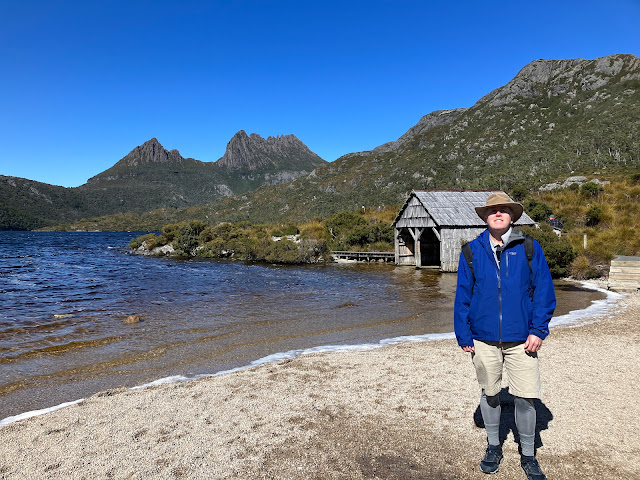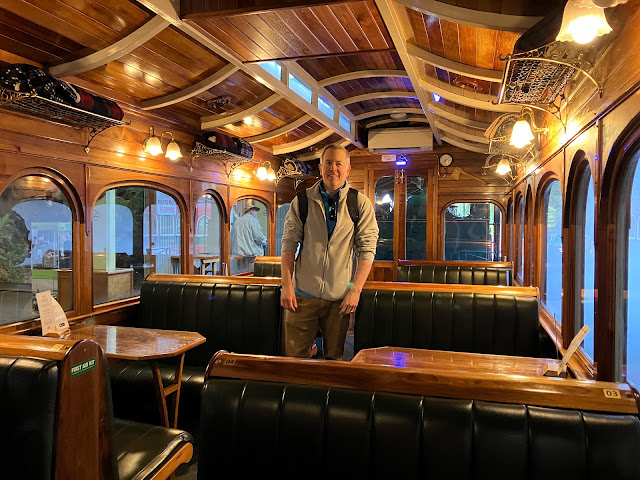On our way from Launceston down to Queenstown, we stopped to do some hiking at Cradle Mountain National Park. It's a very popular park for trekking; there is a six-day hut-to-hut walk here called the Great Overland Track. But...once again, we only had a short time to spend here. Besides, it was cold! It was in the 50's when we arrived and only warmed up later in the day. We both wore multiple layers of clothes to keep ourselves warm. The famous profile of Cradle Mountain is in the background to the left of the photo.
We hiked the Dove Lake track first. It is usually a loop but part of the trail was closed. So after hiking as far as we could and back, we then took the park's shuttle bus to another stop and did the Enchanted Walk to see the waterfalls in the Pencil Pine River.
Signs said to be on the lookouts for wombats in the area. We kept our eyes peeled!
Unfortunately we did not see any actual wombats. But we found evidence of them all over -- lots of little piles of wombat poop everywhere along the trail. Fun fact: wombat poop is cube-shaped. Why? In my extensive research (googling) I've found several theories, but the most interesting one is because they want to make sure it doesn't roll away when they use it to mark their territory. Not sure that is the real scientific explanation but it's good enough for this non-peer-reviewed blog, so I'll go with that one. Also, since I've given myself license to spout unfounded scientific theories: I think that wombats might be the original hobbits. Look at this perfect wombat burrow we saw in the forest -- all it needs is a tiny door and you'd think you were in Hobbiton.
The rack-and-pinion system looks a lot like the inner cogs of a clock. In between the "normal" rails Abt added a third central rail with teeth that would grip the cogwheels on the underside of the engine. This would allow the locomotive to have traction going up steep slopes and -- especially important -- extra braking power on the way down. The train goes through some pretty steep grades (5% to 6.25%) so as a passenger you can feel it and hear it when the rack-and-pinion system kicks in.
For over sixty years (1899-1963) this train hauled ore down to Strahan and goods back up to Queenstown. But after a modern highway was built, it became cheaper to truck out the ore and the railway was closed. But in 2002 it re-opened as a tourist attraction - the West Coast Wilderness Railway. We booked the VIP "Wilderness" class tickets, which meant that we got served drinks and a multi-course meal during the journey. The Wilderness car was very posh and comfortable, with huge windows to view the scenery.
The scenery was nice, but the most appealing aspect of the trip is just learning about how the steam locomotive works and watching the engineers run it. At each end there is a turntable, and they manually unhitch the locomotive, drive it to the center of the turntable, and rotate it by hand so that it can go the opposite way down a side track and get attached to the other end of the carriages.
We started the journey in the carriage right behind the locomotive, and on the way back we ended up as the caboose! All aboard!











No comments:
Post a Comment